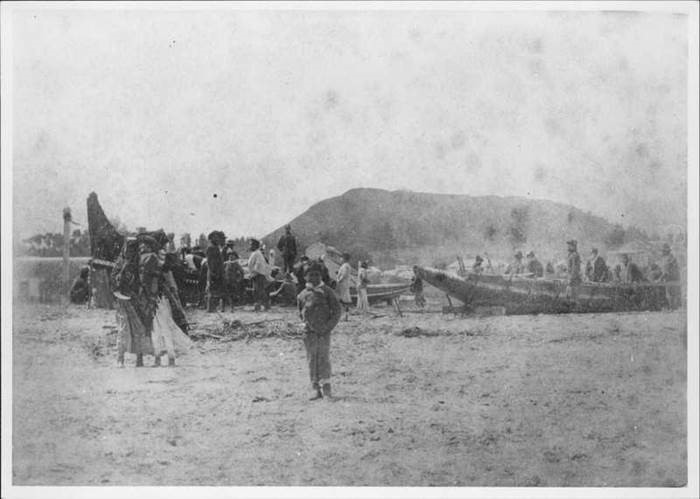THE VERNACULARIST: Whenua Me Te Iwi becomes Te Hau Kapua: Devonport’s Buried Past
Formerly titled Whenua Me Te Iwi, we have changed the name of our upcoming publication to more accurately reflect the nature of the past we are describing. It is in most instances a buried past; most of the landmarks, events and objects have eroded, been buried by lava flows or built over.
Most of us relate Devonport history to its colonial past, which is prominent in this community. Villas, picket fences and carefully cultivated gardens abound, along with street names and landmarks that represent the English monarchy and a nostalgic view of our truncated past.
Te Hau Kapua: Devonport’s Buried Past, our latest Vernacularist publication, attempts to dispel this prevailing perception, acknowledging a significant proportion of history relating largely to Maori settlement, and the extent to which it has been buried.
Te Hau Kapua is a collection of stories about Devonport, which reveal to us a rich and vastly different landscape, population and natural environment.
A social history of Devonport is generally ring-fenced by its colonial past, with scant reference made to the years preceding this. Devonport is described as one of the oldest settled areas in Auckland, but this relates to its colonial settlement from 1840 when it was initially known as Flagstaff. But settlement took place at least 500 years before this when Māori migrated to this area.
This publication acknowledges the extent of Māori settlement and that European Pakeha presence represents a relatively short passage of time, although its influences on the area have been all-encompassing, changing entirely the shape, use and population/demographics of the land. This is, of course, not a localised phenomenon, but its documentation in this community offers an edifying perspective on the history and impact of settlement.
New Zealanders are often surprised by the fact that we have a history. Peter Wells describes us as an ‘ahistorical society’. We exist in a sort of bubble of the present. It’s always intrigued me that we don’t encourage interest in our history. What’s unique about New Zealand is that it’s the last major piece of land on the planet to be settled by humans. We’re at the end of a huge millennial experiment of colonising the planet and you can still clearly see what happened from the arrival of the first Maori and then with large scale European settlement.
Dave Veart, NZ Herald 2015
This publication is not intended as comprehensive or rigorous documentation of pre-1840 occupation or settlement. Its intention is to create a respect for the rich past that extends beyond received knowledge about this community by compiling and presenting information research, stories and snapshots to illustrate life, whenua/land and community before Pakeha populated the area.
Its inspiration has a number of sources; the repatriation of the maunga to Māori, the recognition by archaeologists and geologists of the vast history of the land, and local Māori who currently live in this community and who have, over time, shared their whakapapa, knowledge and experiences with us.
Proposed release date of this publication: September 2018
For more details contact linda.blincko@depotartspace.co.nz or Jermaine.reihana@depotartspace.co.nz

